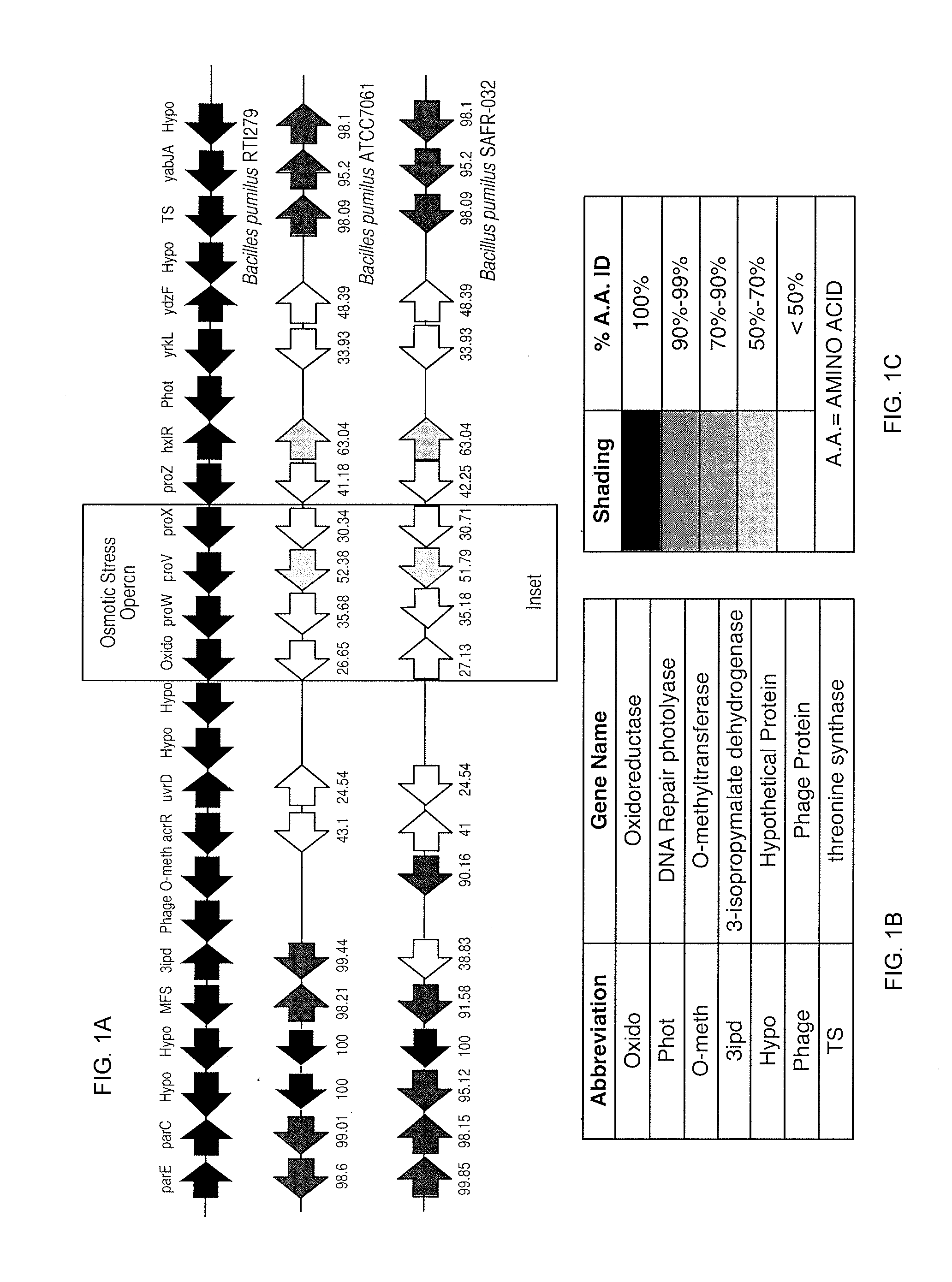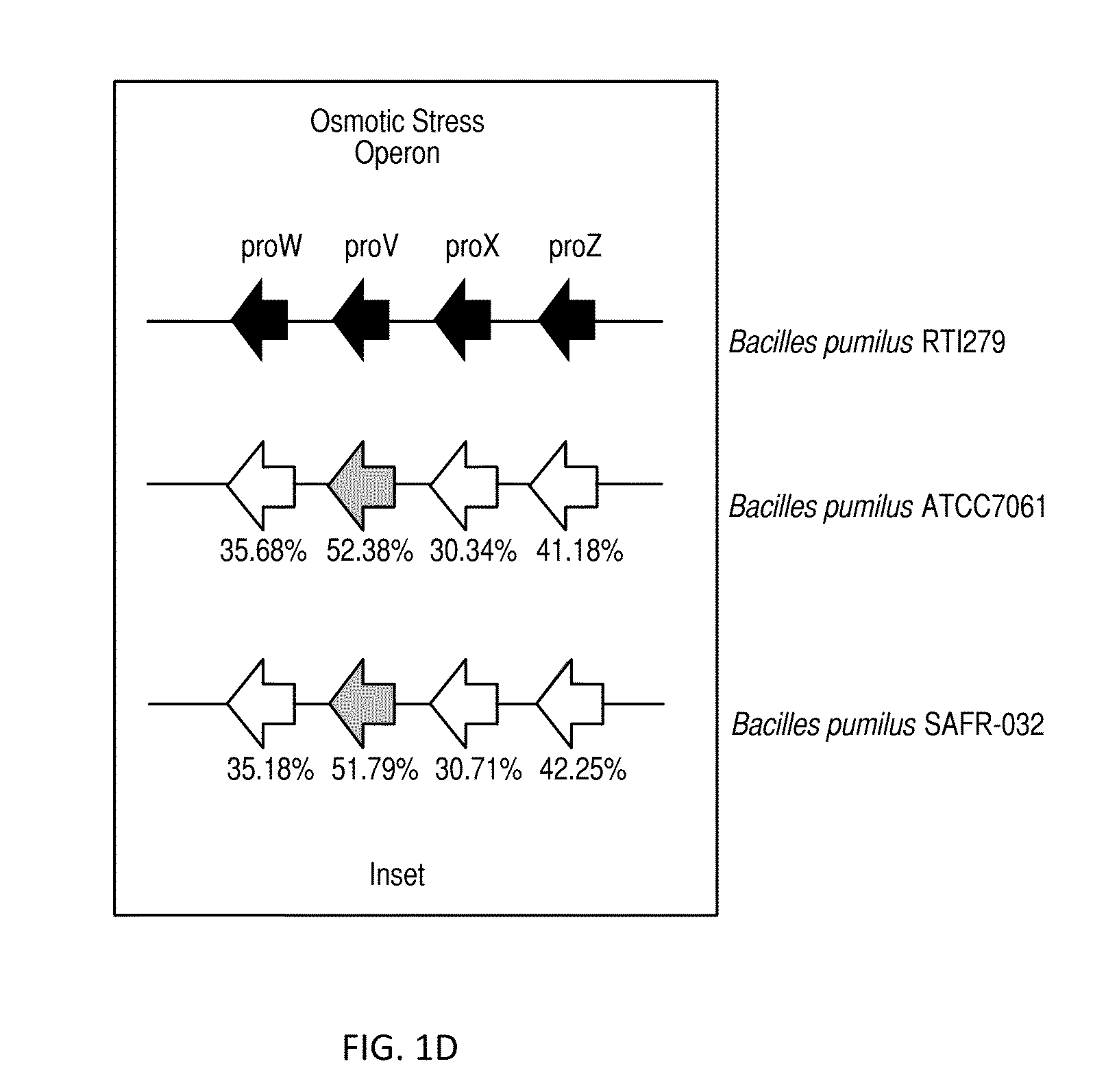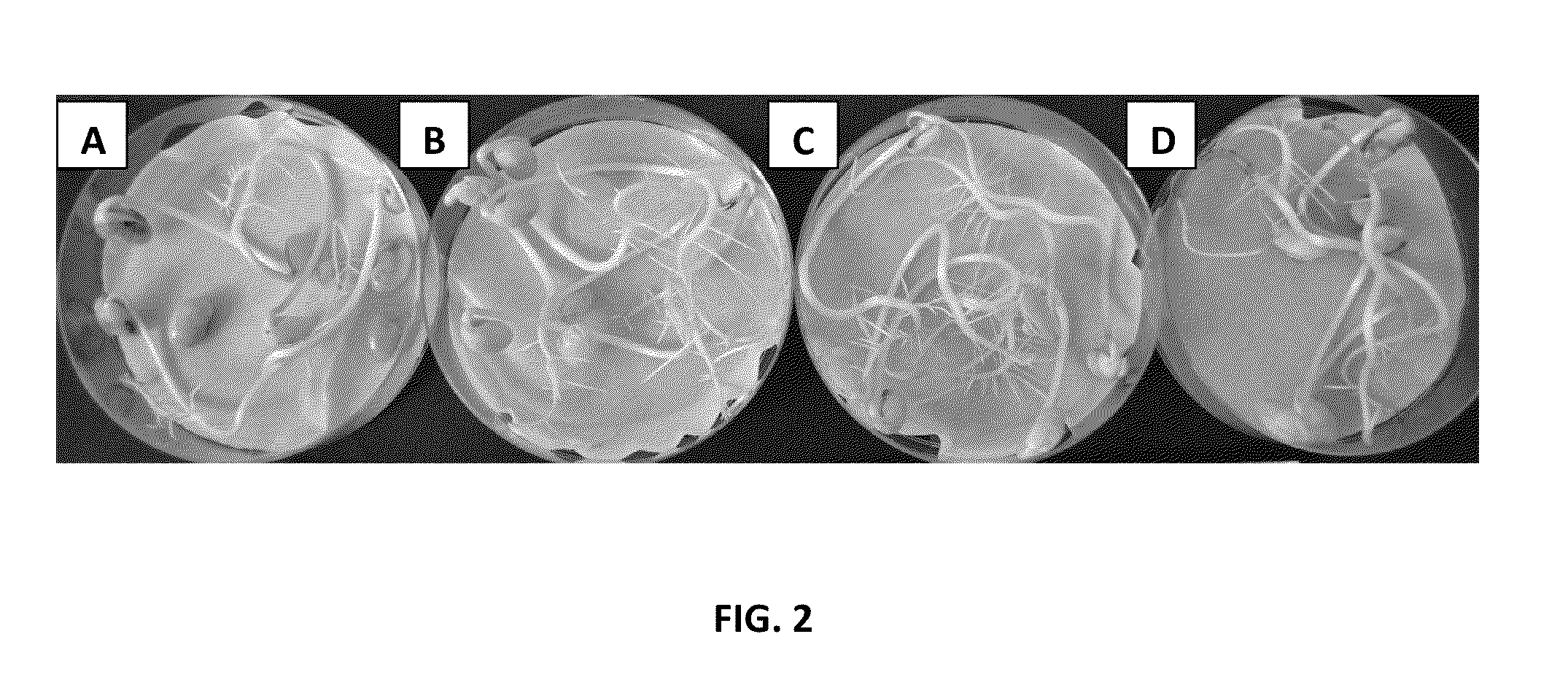Microbial compositions for use in combination with soil insecticides for benefiting plant growth
a technology of soil insecticides and compositions, which is applied in the direction of applications, biocide, waste based fuel, etc., can solve the problems of reducing the economic benefits of soil insecticides, stimulating plant growth, and slowing fruit ripening,
- Summary
- Abstract
- Description
- Claims
- Application Information
AI Technical Summary
Benefits of technology
Problems solved by technology
Method used
Image
Examples
example 1
Identification of a Bacterial Isolate as a Bacillus Pumilus Through Sequence Analysis
[0116]A plant associated bacterial strain, designated herein as RTI279, was isolated from the rhizosphere soil of merlot vines growing at a vineyard in NY. The 16S rRNA and the rpoB genes of the RTI279 strain were sequenced and subsequently compared to other known bacterial strains in the NCBI and RDP databases using BLAST. It was determined that the 16S RNA sequence of RTI279 (SEQ ID NO: 1) is identical to the 16S rRNA gene sequence of eight other strains of B. pumilus, including B. pumilus SAFR-032. This confirms that RTI279 is a B. pumilus. It was determined that the rpoB gene sequence of RTI279 (SEQ ID NO: 2) has the highest level of sequence similarity to the gene in the B. pumilus SAFR-032 strain (i.e. 99% sequence identity); however, there is a 47 nucleotide difference on the DNA level, indicating that RTI279 is a new strain of B. pumilus.
example 2
Genes Related to Osmotic Stress Response in RTI279 Bacillus Pumilus
[0117]Further sequence analysis of the genome of Bacillus pumilus strain RTI279 revealed that this strain has genes related to osmotic stress response, for which there are no homologues in the other closely related B. pumilus strains. This is illustrated in FIG. 1, which shows a schematic diagram of the genomic organization surrounding and including the osmotic stress response operon found in Bacillus pumilus RTI279. In FIG. 1A, the top set of arrows represents protein coding regions for the RTI279 strain with relative direction of transcription indicated. For comparison, the corresponding regions for two Bacillus pumilus reference strains, ATCC7061 and SAFR-032, are shown below the RTI279 strain. Genes are identified by their 4 letter designation unless no designation could be found. If no designation could be found, the gene abbreviations are indicated in the legend shown in FIG. 1B. The degree of amino acid ident...
example 3
Growth Effects of Bacillus Pumilus Isolate RTI279 on Wheat
[0119]The effect of application of the bacterial isolate on early plant growth and vigor in wheat was determined. The experiment was performed by inoculating surface sterilized germinated wheat seeds for 2 days in a suspension of 10+7 bacterial cfu / ml at room temperature under shaking (a control was performed without bacterial cells). Subsequently, the control and inoculated seeds were planted in 4″ pots in duplicate in sand mixture. Each pot was seeded with five seeds of wheat variety HARD RED at 1-1.5 cm depth. Pots were incubated in growth chamber at 24° C. / 18° C. with light and dark cycle of 14 / 10 hrs and watered as needed for 13 days. Dry weight was determined as a total weight per 10 seeds resulting in a total weight equal to 363 mg for the plants inoculated with the RTI279 strain versus a total weight equal to 333.8 mg for the non-inoculated control which is an 8.7% increase in dry weight over the non-inoculated contro...
PUM
| Property | Measurement | Unit |
|---|---|---|
| pH | aaaaa | aaaaa |
| time | aaaaa | aaaaa |
| fresh weight yield | aaaaa | aaaaa |
Abstract
Description
Claims
Application Information
 Login to View More
Login to View More - R&D
- Intellectual Property
- Life Sciences
- Materials
- Tech Scout
- Unparalleled Data Quality
- Higher Quality Content
- 60% Fewer Hallucinations
Browse by: Latest US Patents, China's latest patents, Technical Efficacy Thesaurus, Application Domain, Technology Topic, Popular Technical Reports.
© 2025 PatSnap. All rights reserved.Legal|Privacy policy|Modern Slavery Act Transparency Statement|Sitemap|About US| Contact US: help@patsnap.com



